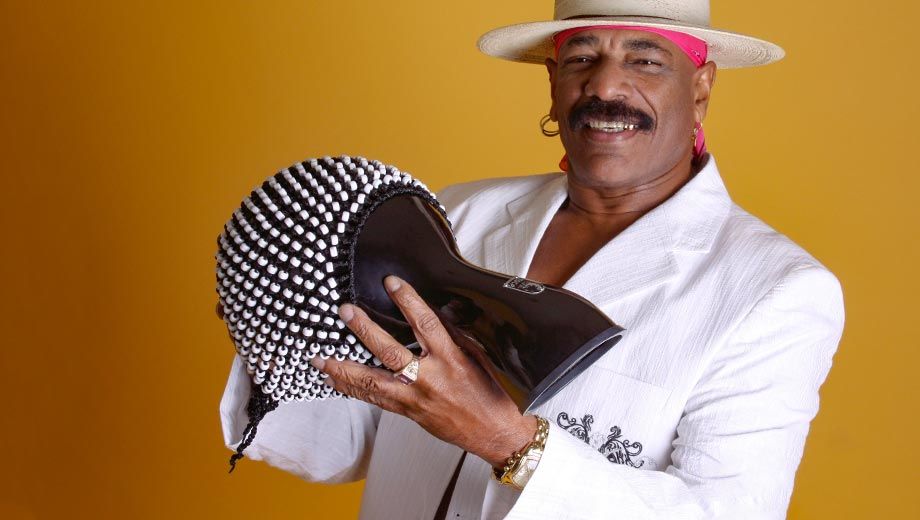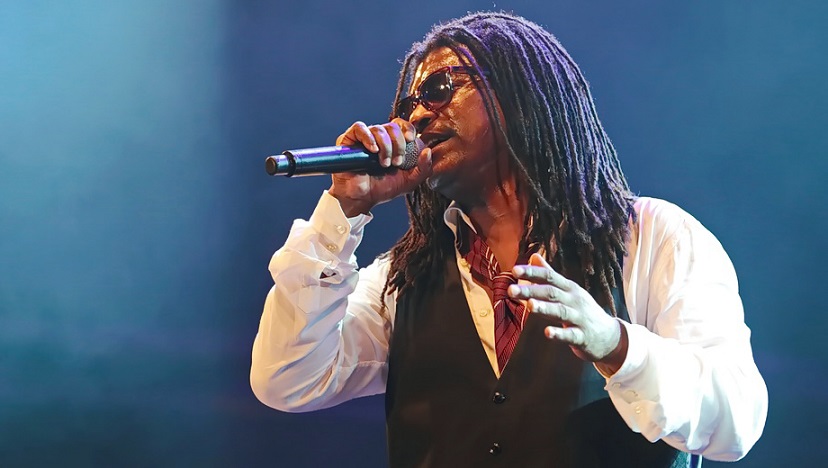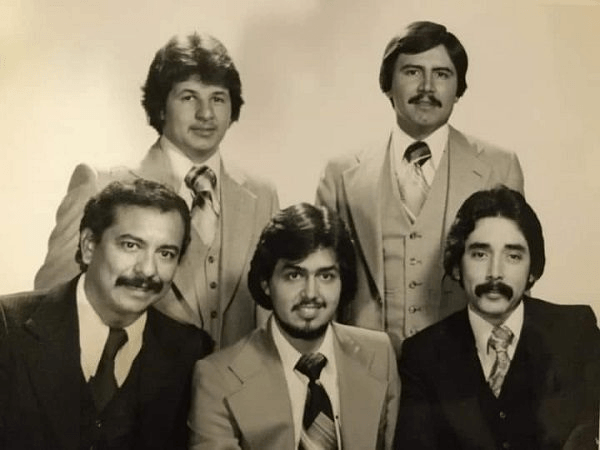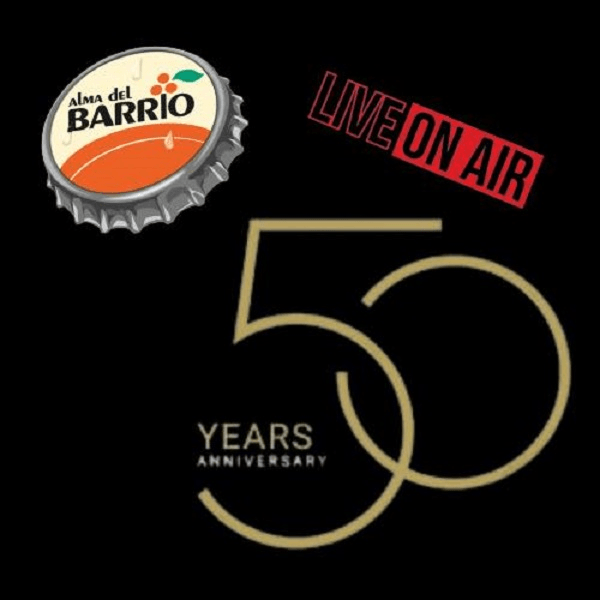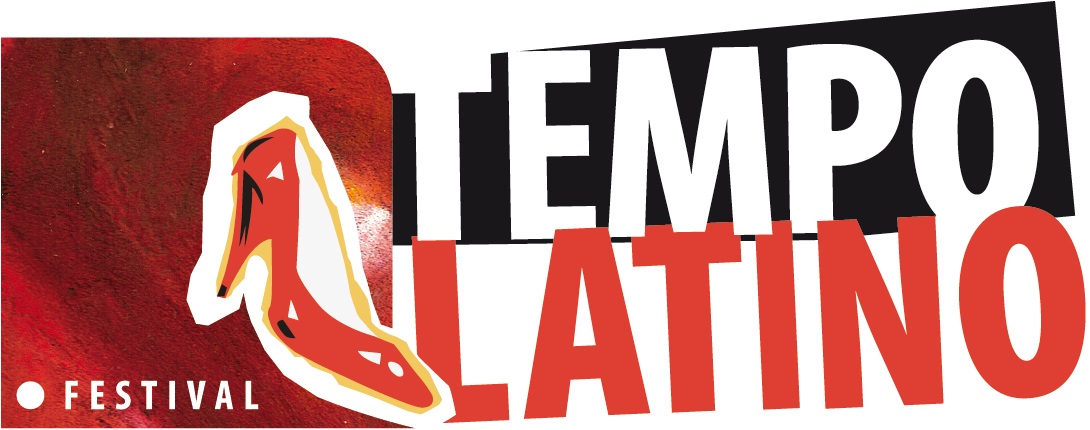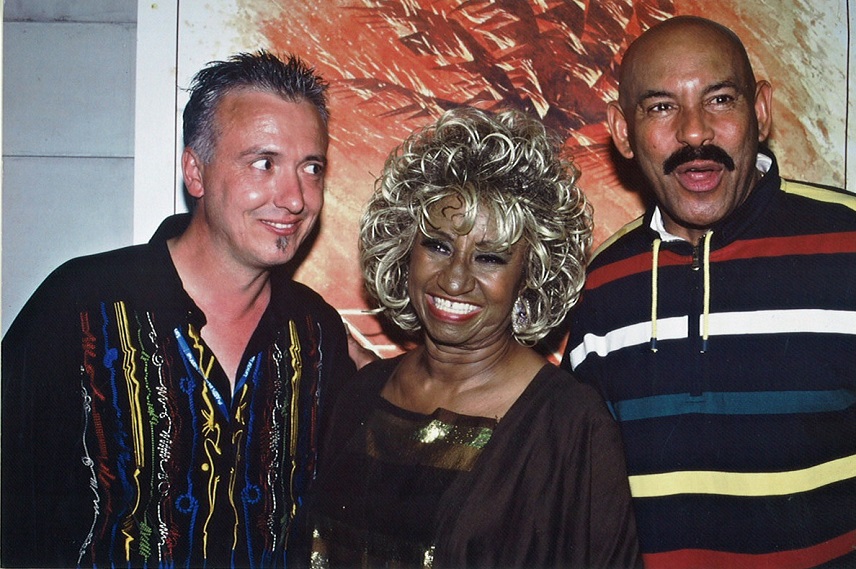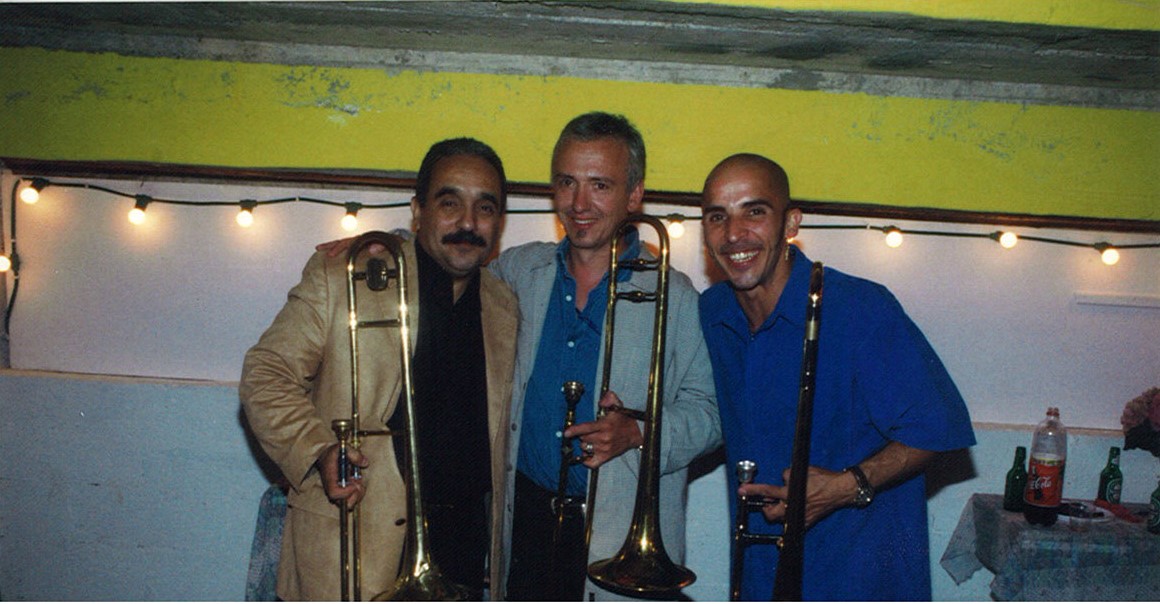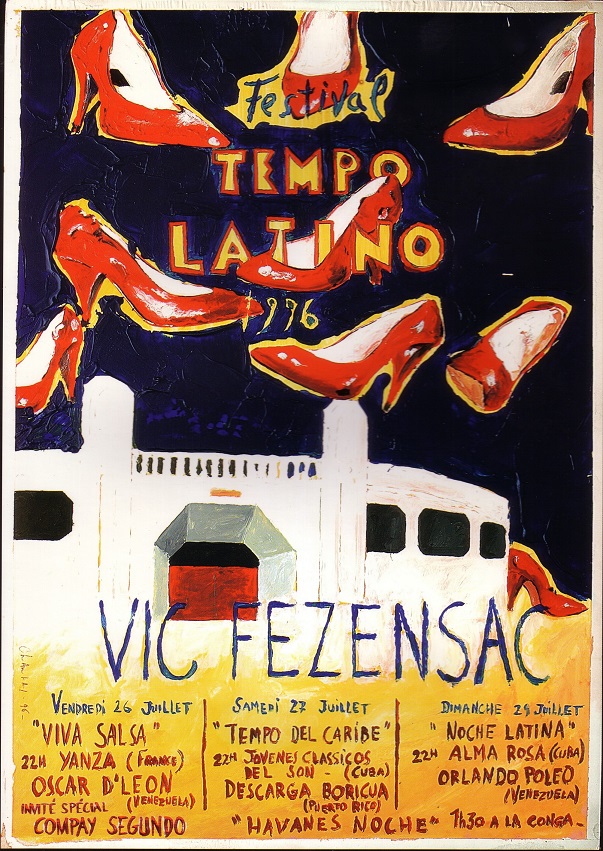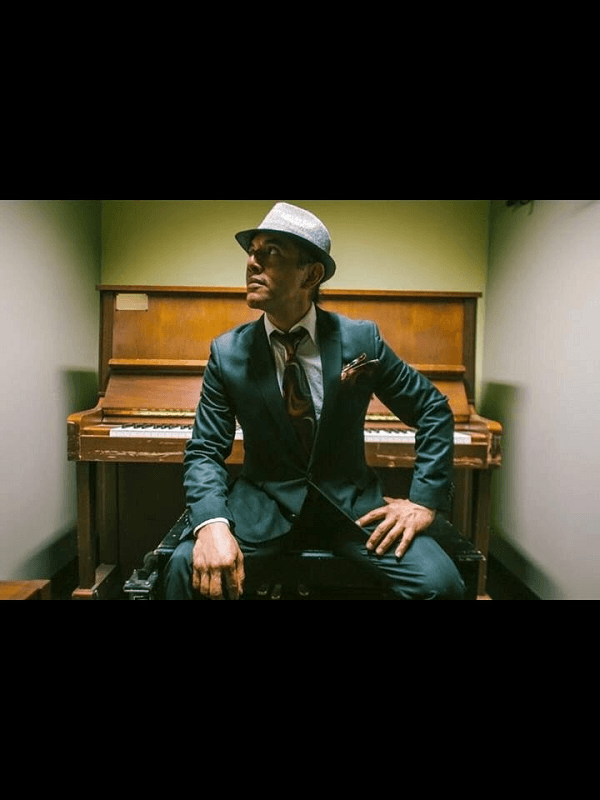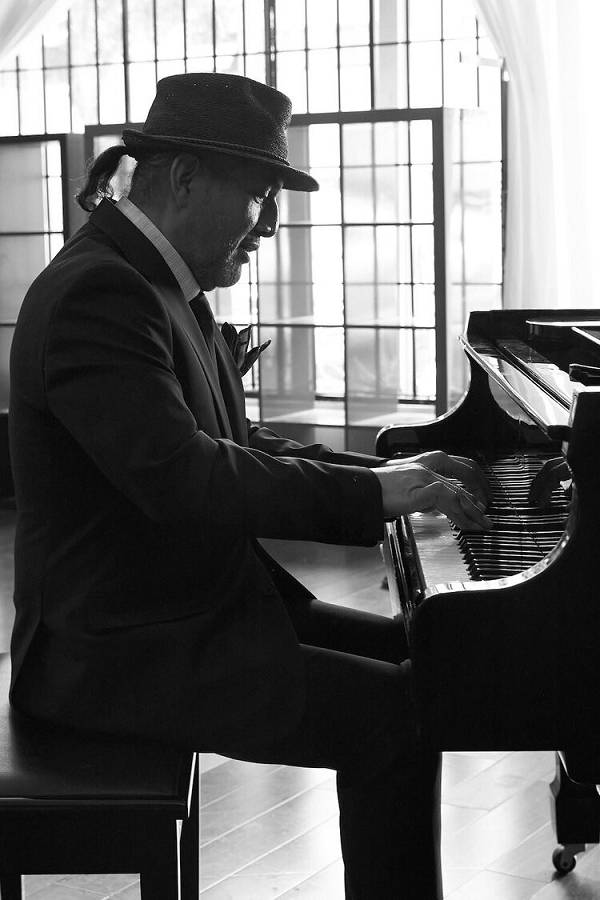Yilian Cañizares is a Cuban and Swiss musician. She has lived in Switzerland since 2000.
Born in Havana, Yilian Cañizares began studying violin in her hometown, in the strictest tradition of the Russian violin school.
At the age of 14 she obtained a scholarship in Caracas and in 2000 she moved to Switzerland to complete her studies at the Freiburg Conservatory.
Soon after, the main orchestras in the area began to contact her and once settled in Lausanne, she collaborated for six years with different ensembles.
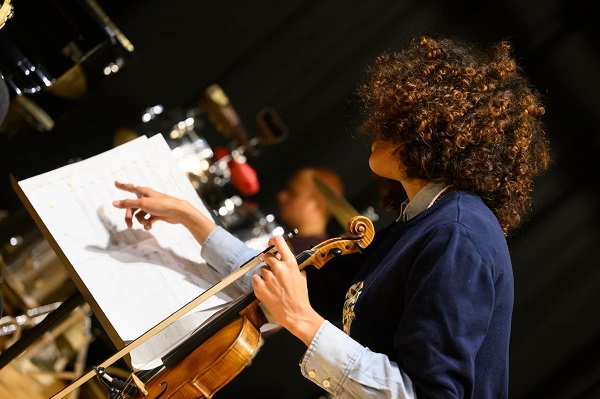
In Switzerland, she opened up to jazz and decided to embark on a new musical path, including singing in her career as a professional artist.
It was during this period that the artist decided to form a quartet with musicians from Germany, Venezuela and Switzerland (and later Cuba), and the group “Ochumare” was born, with which, just six months after its creation, in 2008, she won the prize of the Montreux Jazz Festival Competition.
From that moment on, his career has been growing steadily. In recent years, she has shared the stage with Ibrahim Maalouf, Omar Sosa, Youn Sun Nah, Richard Bona, Chucho Valdés, Roberto Fonseca, Dhafer Youssef, the Lausanne Chamber Orchestra and El Comité.
She also teaches violin at the Ecole de jazz et de musique actuelle de Lausanne (EJMA).
The success of her albums “Ochumare”, an independent production released in 2013, followed by “Invocación”, under the direction of Alê Siqueira (who has collaborated with Roberto Fonseca, Omara Portuondo), has consolidated her notoriety as an innovative artist, capable of venturing and transcending musical boundaries.
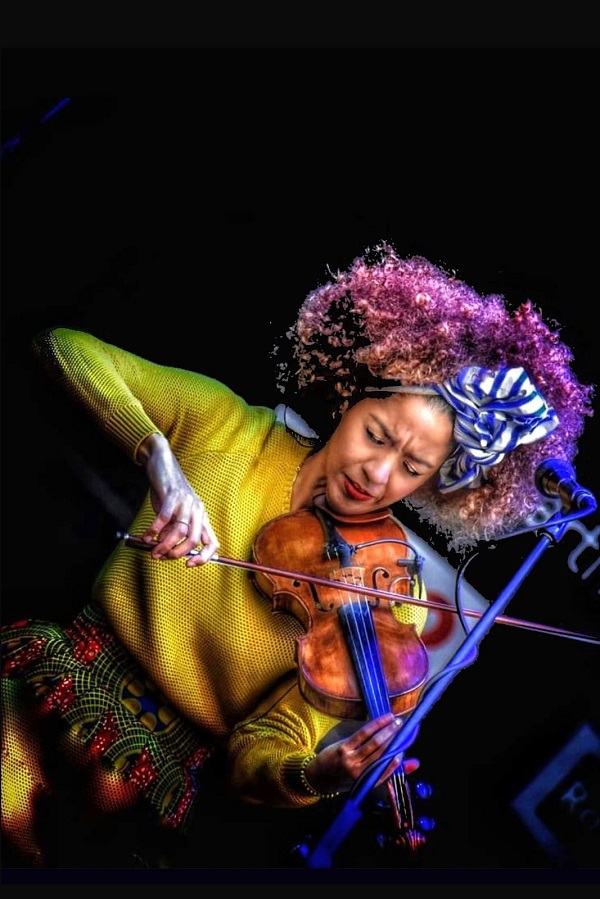
She was listed by the French weekly Le Nouvel Observateur as “revelation artist of the year” for her great virtuosity and charisma with which she is able to sing and play the violin.
“My sound reflects the richness and mix of cultures that I carry with me to this day and represents who I am: woman, Cuban, musician and citizen of the world”, said the artist.
Her second album “Invocación” reached the top of the Qobuz – World Music chart and was re-released in a Deluxe edition.
“Aguas”, the album produced in collaboration with Omar Sosa, saw the light of day in October 2018.
Accompanied by another compatriot, Inor Sotolongo on percussion, the duo created an intimate and personal album that reflects the views of two generations of Cuban artists living far from their homeland.
This album is a mix of energetic rhythms and emotional ballads that clearly reflect the unparalleled musical chemistry that exists between the two artists.
It constitutes a powerful and unique fusion of Afro-Cuban roots, classical music and jazz.
On November 15, 2019 was released the new album “Erzulie”, with its new formation Yilian Cañizares & The Maroons and dedicated to the Haitian deity of love and freedom.
This album was recorded in New Orleans and features the participation of numerous guests such as Christian Scott (trumpet), Michael League (double bass), Bill Laurance (piano), Bobby Sparks (organ) and Justin Stanton (keyboards).

His style reflects the variety of his influences, with touches of jazz, classical music, Cuban music, with a large space left to improvisation.
The French magazine Les Inrockuptibles speaks of a jazz orchestration mixed with Yoruba ritual percussions.
She sings in Spanish, Yoruba and French and one of her distinctive features is that she sings and plays the violin at the same time.
There are so many influences on this album; Cuban, jazz, Venezuelan, Swiss, that it is difficult to pinpoint in each song which track falls into which category. In fact, they don’t.
Today it is too easy to want to pigeonhole music into one category: this is jazz; this is soul; this is funk. Yilian Canizares, in this wonderful album, breaks the stereotypes and that is why it is a pleasure to listen to it.
Sweet musical outbursts, explosions of improvisation that jump all over the place. He even finds a place to rap on “Iya Mi” and, obviously, it’s brilliant!
If we had to put a label on it, which I’m not thrilled about, I’d say this is a warm jazz album with Latin infused touches and tricks.
The meandering melody of “Beroni Abebe Osun”, the first track on the album, is a good indicator of this.
The throbbing bass, the heartbeat of the track, with its plucked violin, the blood pumping through his veins.
Cañizares is also a linguist, in case that wasn’t enough for us all to admire her.
The way he transitions from Spanish to perfect syllable-perfect French in his version of Edith Piaf’s “Je Ne Regrette Rien” (a beautiful version, by the way) is seamless and you could be forgiven for thinking it’s his first language.
It’s not easy to cover songs as big as Piaf’s classic, but Cañizares does it with style, class and, most importantly, grace.
Anything less than grace in a song like this makes it a bad version. It could be its own track, the strings perfectly light to complement the calmness of the voice and the ease with which Piaf’s lyrics take the weight of the world off our shoulders. I don’t regret a thing.” So simple. Yilian Canizares, we salute you.
And we’ll be on the lookout for the next album.
(kreolmagazine)
Yilian Cañizares – Invocación (2015).
Musicians:
Yilian Cañizares (Violin and vocals).
Daniel Stawinski (Piano)
David Brito (Double bass and electric bass)
Cyril Regamey (Drums and percussion).
Guests:
Akua Naru on Iya Mi
Gabi Guedes Gã & atabaques Rum, Pi, lé
Blaise Lambelet English horn on Laïla
Caxeiras do Divino da Família Menezes, Graça Re Reis & Bartira Menezes Caxeiras & Bartira Menezes &
Brazilian choir in Beroni
Julia Stuller, Gàbor Barta, Ivan Zerpa strings in Non je ne regrette rien
Luis Carbonell Voice in Canciòn de cuna para dormir a un negrito (Lullaby to put a little black boy to sleep)
Juan Carlos Toca Voice in Mapucha
All the songs by Yilian Cañizares except Beroni Abebe Osun (traditional/ Y. Cañizares) and
Non je ne regrette rien (Vaucaire/Dumont)
String arrangement (Non je ne regrette rien ) by André Mehmari
Cyril Regamey uses exclusively Istambul cymbals, Vater drumsticks and Aquarian drumheads.
Information provided (December 30, 2023)


